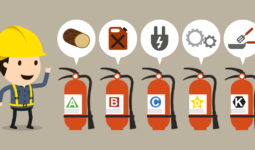Different sprinkler systems depend on various factors and are available widely.
Safety is paramount, and businesses and homeowners should take the required safety measures to avoid tragedies and comply with fire safety laws.
Fire sprinkler systems come in various shapes and sizes, even though the term may sound general.
Even though all sprinklers work to protect and preserve, they all do so in slightly different ways.
Safety cannot be guaranteed with standard fire detection equipment or generic smoke detectors when working to protect life.
In this article, we’ll examine the various kinds of automatic sprinkler systems for buildings, their features, and a closer examination of the factors contributing to their appeal.
However, various kinds of fire sprinkler systems are in place to save lives in the event of a fire. They are made to guard against any harm to the neighborhood and property.
Fire suppression systems assist in dousing smoke and flames and lessen the chance of a fire spreading.
They lessen overall damage and allow people to leave the area until the local fire departments arrive. There are four different types of sprinkler systems for buildings.
Each type has been modified to meet the needs of various facilities, residences, and complexes to maximize response times. Additionally, they guarantee the security of all personnel and resources.
Here are the different types of sprinkler systems. Please read on.
1. Wet Pipe System
Most residential sprinkler systems use wet pipe systems, a standard option for commercial buildings.
The firing temperature causes the nearby automatic sprinkler head to activate, discharging water from the pipe storage.
The surrounding sprinkler heads operate similarly after the initial activation, but it’s important to remember that they won’t release pressurized water unless heat is applied. If you accidentally raise the alarm, this stops water damage.
Wet pipe systems are typically a low-cost, low-maintenance choice suitable for office buildings, educational institutions, and commercial enterprises.
2. Dry Pipe System
Dry pipe systems are installed in locations where the ambient temperature may be low enough for the water in a wet pipe system to freeze, rendering it inoperable.
Since dry pipe systems do not leak water, they are frequently used in refrigerated coolers, parking lots, unheated buildings, and water-sensitive areas.
Pressurized air is pumped into the sprinkler piping. The sprinkler and water supply pipes are divided using a unique alarm valve.
Also, the air in the piping can vent from a sprinkler when one or more automatic sprinklers are exposed to a temperature at or above the temperature rating.
Furthermore, The alarm valve will open as the air pressure in the piping decreases, and the pressure differential across it changes, allowing water to enter the piping system.
The sprinklers’ water flow is delayed until the air is vented from the sprinklers. Therefore, dry pipe systems are slower to respond in the early stages of a fire.
However, the time it takes to let the air out of the pipe causes the only delay before the sprinklers disperse water. This indicates that there is a chance for serious water damage.
3. Deluge System
Deluge systems are sprinkler networks on which every connected sprinkler is located. These sprinklers don’t have a sensing component (glass bulb).
When a rapid fire spread is a concern, deluge systems are employed. Water will be sprayed all over the area by the open sprinklers.
In a fire, a mechanically activated deluge valve will open. Allowing water to fill the sprinkler pipe, which is filled with atmospheric pressure.
A signal from a fire alarm system opens the deluge valve, which stays open once it is opened.
Also, the fire alarm system opens the deluge valve when smoke or heat detectors activate the alarm system. This is one of the different types of sprinkler systems.
4. Pre-Action System
Preaction fire, one of the different types of sprinkler systems, has air-filled piping, similar to a dry-pipe system.
The opening of a fire sprinkler head and a separate flame, heat, or smoke detection are typically required for sprinkler discharge in a pre-action system.
Moreover, this kind of fire sprinkler system, used to safeguard museums and pricey electronics, is intended to lessen false deployment and the damage that results from it.
Also, smoke detectors, heat detectors, and other devices can send signals to a pre-action valve, releasing water into sprinkler system piping in response to a fire.
That water stays in the system until an automatic fire sprinkler head activates and puts out the flames.








